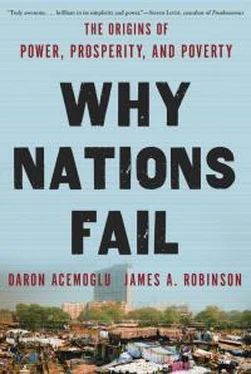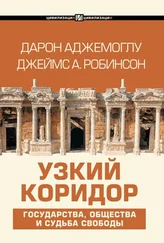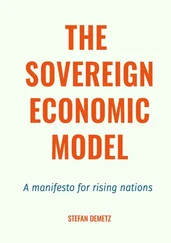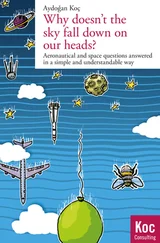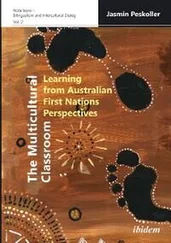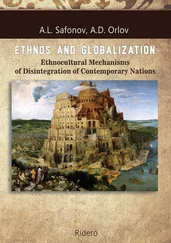In contrast to their northern neighbors, democracy is a very recent experience for them. Until the political reforms of 2000, Nogales, Sonora, just like the rest of Mexico, was under the corrupt control of the Institutional Revolutionary Party, or Partido Revolucionario Institucional (PRI).
How could the two halves of what is essentially the same city be so different? There is no difference in geography, climate, or the types of diseases prevalent in the area, since germs do not face any restrictions crossing back and forth between the United States and Mexico. Of course, health conditions are very different, but this has nothing to do with the disease environment; it is because the people south of the border live with inferior sanitary conditions and lack decent health care.
But perhaps the residents are very different. Could it be that the residents of Nogales, Arizona, are grandchildren of migrants from Europe, while those in the south are descendants of Aztecs? Not so. The backgrounds of people on both sides of the border are quite similar. After Mexico became independent from Spain in 1821, the area around “Los dos Nogales” was part of the Mexican state of Vieja California and remained so even after the Mexican-American War of 1846–1848. Indeed, it was only after the Gadsden Purchase of 1853 that the U.S. border was extended into this area. It was Lieutenant N. Michler who, while surveying the border, noted the presence of the “pretty little valley of Los Nogales.” Here, on either side of the border, the two cities rose up. The inhabitants of Nogales, Arizona, and Nogales, Sonora, share ancestors, enjoy the same food and the same music, and, we would hazard to say, have the same “culture.”
Of course, there is a very simple and obvious explanation for the differences between the two halves of Nogales that you’ve probably long since guessed: the very border that defines the two halves. Nogales, Arizona, is in the United States. Its inhabitants have access to the economic institutions of the United States, which enable them to choose their occupations freely, acquire schooling and skills, and encourage their employers to invest in the best technology, which leads to higher wages for them. They also have access to political institutions that allow them to take part in the democratic process, to elect their representatives, and replace them if they misbehave. In consequence, politicians provide the basic services (ranging from public health to roads to law and order) that the citizens demand. Those of Nogales, Sonora, are not so lucky. They live in a different world shaped by different institutions. These different institutions create very disparate incentives for the inhabitants of the two Nogaleses and for the entrepreneurs and businesses willing to invest there. These incentives created by the different institutions of the Nogaleses and the countries in which they are situated are the main reason for the differences in economic prosperity on the two sides of the border.
Why are the institutions of the United States so much more conducive to economic success than those of Mexico or, for that matter, the rest of Latin America? The answer to this question lies in the way the different societies formed during the early colonial period. An institutional divergence took place then, with implications lasting into the present day. To understand this divergence we must begin right at the foundation of the colonies in North and Latin America.
THE FOUNDING OF BUENOS AIRES
Early in 1516 the Spanish navigator Juan Díaz de Solís sailed into a wide estuary on the Eastern Seaboard of South America. Wading ashore, de Solís claimed the land for Spain, naming the river the Río de la Plata, “River of Silver,” since the local people possessed silver. The indigenous peoples on either side of the estuary—the Charrúas in what is now Uruguay, and the Querandí on the plains that were to be known as the Pampas in modern Argentina—regarded the newcomers with hostility. These locals were hunter-gatherers who lived in small groups without strong centralized political authorities. Indeed it was such a band of Charrúas who clubbed de Solís to death as he explored the new domains he had attemped to occupy for Spain.
In 1534 the Spanish, still optimistic, sent out a first mission of settlers from Spain under the leadership of Pedro de Mendoza. They founded a town on the site of Buenos Aires in the same year. It should have been an ideal place for Europeans. Buenos Aires, literally meaning “good airs,” had a hospitable, temperate climate. Yet the first stay of the Spaniards there was short lived. They were not after good airs, but resources to extract and labor to coerce. The Charrúas and the Querandí were not obliging, however. They refused to provide food to the Spaniards, and refused to work when caught. They attacked the new settlement with their bows and arrows. The Spaniards grew hungry, since they had not anticipated having to provide food for themselves. Buenos Aires was not what they had dreamed of. The local people could not be forced into providing labor. The area had no silver or gold to exploit, and the silver that de Solís found had actually come all the way from the Inca state in the Andes, far to the west.
The Spaniards, while trying to survive, started sending out expeditions to find a new place that would offer greater riches and populations easier to coerce. In 1537 one of these expeditions, under the leadership of Juan de Ayolas, penetrated up the Paraná River, searching for a route to the Incas. On its way, it made contact with the Guaraní, a sedentary people with an agricultural economy based on maize and cassava. De Ayolas immediately realized that the Guaraní were a completely different proposition from the Charrúas and the Querandí. After a brief conflict, the Spanish overcame Guaraní resistance and founded a town, Nuestra Señora de Santa María de la Asunción, which remains the capital of Paraguay today. The conquistadors married the Guaraní princesses and quickly set themselves up as a new aristocracy. They adapted the existing systems of forced labor and tribute of the Guaraní, with themselves at the helm. This was the kind of colony they wanted to set up, and within four years Buenos Aires was abandoned as all the Spaniards who’d settled there moved to the new town.
Buenos Aires, the “Paris of South America,” a city of wide European-style boulevards based on the great agricultural wealth of the Pampas, was not resettled until 1580. The abandonment of Buenos Aires and the conquest of the Guaraní reveals the logic of European colonization of the Americas. Early Spanish and, as we will see, English colonists were not interested in tilling the soil themselves; they wanted others to do it for them, and they wanted riches, gold and silver, to plunder.
FROM CAJAMARCA …
The expeditions of de Solís, de Mendoza, and de Ayolas came in the wake of more famous ones that followed Christopher Columbus’s sighting of one of the islands of the Bahamas on October 12, 1492. Spanish expansion and colonization of the Americas began in earnest with the invasion of Mexico by Hernán Cortés in 1519, the expedition of Francisco Pizarro to Peru a decade and a half later, and the expedition of Pedro de Mendoza to the Río de la Plata just two years after that. Over the next century, Spain conquered and colonized most of central, western, and southern South America, while Portugal claimed Brazil to the east.
The Spanish strategy of colonization was highly effective. First perfected by Cortés in Mexico, it was based on the observation that the best way for the Spanish to subdue opposition was to capture the indigenous leader. This strategy enabled the Spanish to claim the accumulated wealth of the leader and coerce the indigenous peoples to give tribute and food. The next step was setting themselves up as the new elite of the indigenous society and taking control of the existing methods of taxation, tribute, and, particularly, forced labor.
Читать дальше
